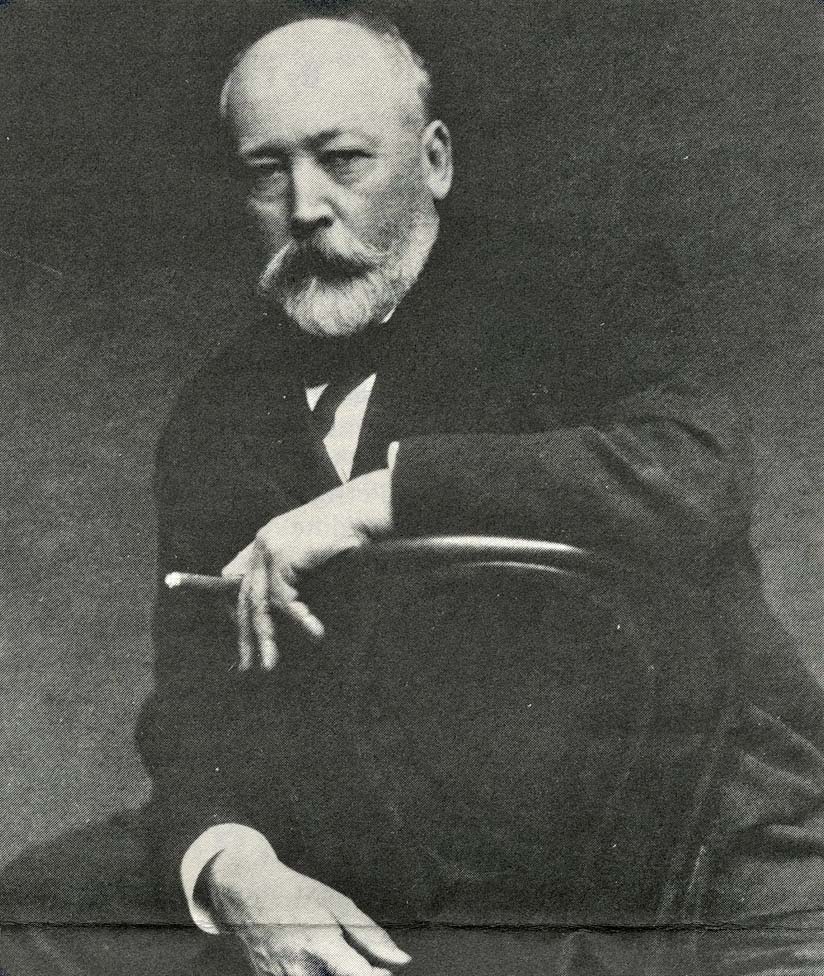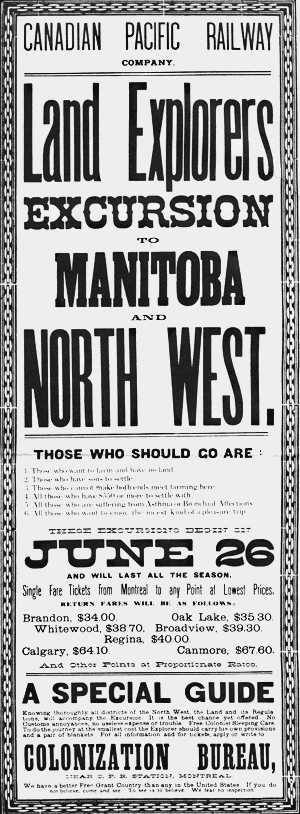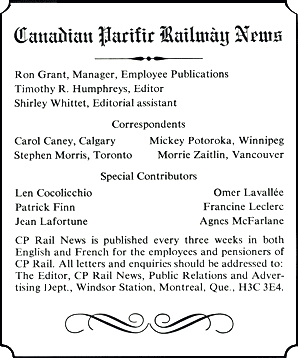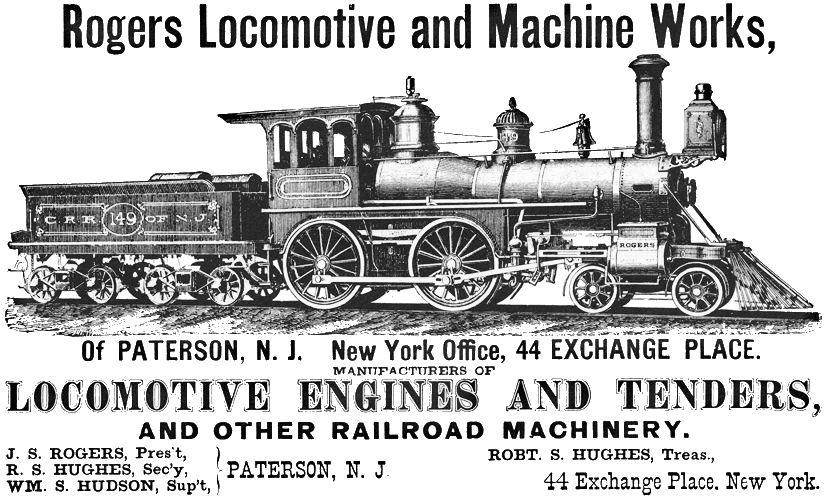
|
VOLUME XI
NUMBER 2 |
FEBRUARY 16, 1981 CENTENNIAL ISSUE
|
|

Flesh-and-Blood People
By Omer Lavallee
"History", wrote Thomas Carlyle, "is the essence of innumerable biographies." Nowhere is this truth more apparent than in the evolution of Canadian Pacific, whose centennial we observe today. Companies and organizations, though "persons" in the legal sense of that term, are made up of flesh-and-blood people. As we consider the involvements and accomplishments of 100 years, we must bear in mind that events do not occur of themselves. The fact that the century mark has been attained is, first and foremost, a tribute to the application and industry of the hundreds of thousands of people in the Canadian Pacific family who have made it possible.

What was known originally as the Canadian Pacific Railway Company, since 1971, Canadian Pacific Limited, came into being on 16 Feb 1881 in the form of Letters Patent issued by the Government of Canada. This charter was authorized by a special act of Parliament, known in "legalese" as 44 Victoria, Chapter 1, which had been given royal assent by the governor-general, the Marquess of Lome, on the previous day. The new company was headed by George Stephen, Duncan Mclntyre, and Richard B. Angus, all successful, Scottish-born Montreal businessmen, and James J. Hill, a native of Ontario who had gone to the United States several years before to seek his fortune. Hill had been actively engaged in reviving several moribund railways in Minnesota, and was the only experienced railwayman in the group.
It was left to Hill to hire the initial staff, operations were to commence on 1 May 1881, and he brought in Alpheus B. Stickney as general superintendent and General Thomas L. Rosser as chief engineer, to head a staff headquartered in Winnipeg. Rosser, was a West Point classmate of General George Custer of "Little Big Horn" fame. After graduation, these two career military men had fought on opposite sides in the American Civil War, Custer with the Union and Rosser with the Confederacy. Like many military engineers, Rosser's experience in what historians have characterized as the first "railroad war" found a ready market in civilian pursuits in the rail-building boom in the 1870s.
The hiring of Stickney and Rosser did not have happy results. Late in 1881, they became involved in land speculation at what is now Brandon, Manitoba, the first subdivision point west of Winnipeg. Since they had apparently used their knowledge as officers of Canadian Pacific for personal benefit, Stephen insisted that they resign. Hill set out to replace them and his choice proved the old adage about clouds and silver linings, he brought in William Cornelius Van Horne, a 38-year-old Illinois born railroader, who, as general manager, replaced both Stickney and Rosser.
In 1882, Van Horne hired Thomas G. Shaughnessy of Milwaukee to be his right-hand-man in the crucial task of purchasing equipment and supplies. At the same time, he moved his headquarters to Montreal to assume direct control both of construction and operations on the system. Though Van Horne had been Hill's choice, he was not by any means a protege.
In 1883, Van Horne disagreed with Hill on the routing of the railway. Hill had hoped that his own lines in Minnesota might form part of the Canadian transcontinental for a transitional period, thus avoiding the necessity to construct a railway immediately around the unpopulated and unproductive North Shore of Lake Superior. Van Horne was adamant, he had been hired to build an all-Canadian railway, and build it he would. As a consequence, Hill resigned and became an implacable foe of Canadian Pacific. In later years, his railway, known later as the Great Northern and serving the northern tier of western states, attempted many times to tap Canadian traffic sources in boundary areas. This competition was to last for nearly 30 years.
Van Home's productivity astounded Canadian Pacific's directors. In contrast to 136 miles added to the prairie main line, in 1881, no less than 418 miles were added in 1882 and 376 more by the end of 1883, bringing the railhead to the summit of the continental divide at a siding appropriately called "Stephen". In the latter year, under the direct supervision of James Ross, manager of construction in the west, nearly six-and-a-half miles of track were laid in one day, 28 Jul 1883, at a point near Strathmore, Alberta. When the rails reached Calgary, the famed Oblate missionary, Father Albert Lacombe, was entertained at a dinner in car No. 33, in which Canadian Pacific's principals and many directors participated.
Made "president" of Canadian Pacific for one hour (ceremonially, not officially), Lacombe reciprocated by putting George Stephen in charge of the parish of St. Mary's in Calgary for the same period of time. "Poor souls of Calgary" said Stephen, looking out of the car window, "I pity you".

Despite acute setbacks caused by unscrupulous subcontractors and shoddy work inherited from government contracts, under Van Home's direction the huge task was completed in less than half the stipulated time, the rails from the east being laid to a connection with those already constructed from the West Coast early in November, 1885, at a point in Eagle Pass between Revelstoke and Sicamous.
There was much popular interest in the accomplishment and many expected that the termination of this important work would be marked by elaborate ceremonies and speech making, a ritual which had marked the completion of the important trunk lines in the United States. Van Horne was only too keenly aware that such events also almost invariably presaged bankruptcy and his attitude to an anticipated completion of the work, as delivered to a group of particularly persistent reporters in Winnipeg about a week before the line was completed, was typical of the attitudes and feelings of a "railway general" who had pursued one of the most ambitious construction tasks in the world through to a successful completion.
He said, "We intend going to British Columbia but cannot say whether we will pass over the line before or after the last spike, about which you appear to be so anxious, is driven. No, I'm sure I can't say who will drive the last spike. It may be Tom Mularky or Joe Tubby, and the only ceremony that I fancy may occur will be the damning of the foreman for not driving it quicker. There will be no concluding ceremony, no nonsense. Some roads may like to advertise by making a great fuss, but we do not care for that sort of thing."
In retrospect, the ceremony, if such it may be called, was almost an anticlimax. The special train carrying the directors, Van Horne, and senior officers arrived at the site of the joining of the rails very opportunely, about an hour before the task was to be done, on the damp and foggy morning of Saturday, 7 Nov 1885. Interestingly, president George Stephen was not among the "chosen", he had elected to go to England to try to press Canadian Pacific's interest in obtaining a mail contract for a steamer line on the Pacific Ocean. By unanimous choice, his cousin, Donald A. Smith, one of the senior directors, was asked to perform the act of the driving of the Last Spike. After he did so, Van Horne summed up the task in only 15 words, "All I can say is that the work has been well done in every way."
The "last spike" proved to be a beginning rather than an end. Ultimately, Stephen's efforts with the British government proved fruitful. In 1887, chartered vessels, and in 1891, the Company's own pioneer "Empress" ships, three in number, provided service between Vancouver, Japan, and China. For this service, Van Horne personally designed the red-and-white checkered house flag which was flown for nearly 80 years. Van Horne was an inveterate poker player, and some of his acquaintances suggested that the design of this flag depicted "three of a kind". The typical Van Horne retort in denial was that only a "royal flush" would be appropriate for Canadian Pacific.

 and is reprinted here with their permission.
All photographs, logos, and trademarks are the property of the Canadian Pacific Railway Company.
and is reprinted here with their permission.
All photographs, logos, and trademarks are the property of the Canadian Pacific Railway Company.